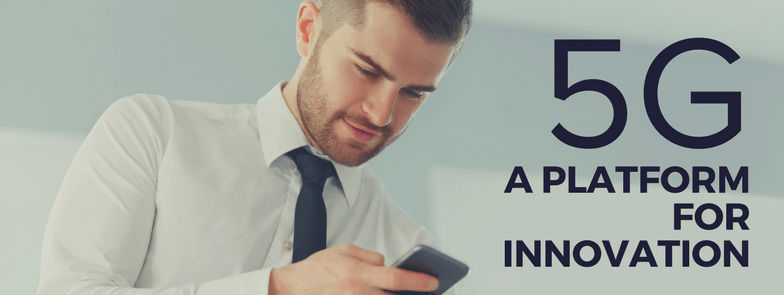The transition from 3G to 4G was one most mobile Internet users almost did not notice. The speed has increased and that is the end of the change. But the transition to the new standard of 5G is expected to tell a very different story. Together with new speeds, new opportunities, new devices and a new look at all mobile internet and its related industries will appear and change the markets. Here we explain why 5G will become a platform for innovation.

A large number of telecom operators have reported their plans to switch to 5G sooner or later. But even now not only new base stations are being tested, but entire networks of connected devices are being established. The fact is that 5G will allow enterprises to collect data on cities and their inhabitants as never before. The standard will allow devices to interact in a new way and will give a person remote control of cars real-time – without noticeable delays.
Specialists call 5G not just a new communication standard, but a “platform for innovation”. Most noticeable of all the differences from 4G is the increased speed. In theory, it can be up to 100 times faster. But much more important is that with 5G it was possible to reduce the response time of connected devices to 1 ms. That is, any remote device will respond with a minimum delay. This opens up great opportunities in many areas, right up to remote surgical operations.
Autonomous transport will become an organic participant in general traffic and transport because the reaction of the robot will cease to yield to the human. The system of sensors connected to other sensors, which will cover whole cities, will lead the behavior of unmanned vehicles to the maximum logical and safe permissible. All this will become real after the launch of 5G at full capacity. Autonomous management of cars and other devices will be able to work not only for transport. Also, for example, in construction equipment. Experts also forecast that 5G will change the broadcasting industry. VR will be able to fully penetrate the TV and the viewer will independently create their own broadcast, control the camera when viewing an event or match and display only the statistics he needs. 4G could not provide enough bandwidth and response for this, where 5G will.
The city will become alive and responsive to human actions and patterns of behavior. All cameras, sensors, pollution, noise and traffic level sensors will be integrated into one network. That will manage a city’s infrastructure and functionality. With such a system, it will be possible to respond to changing urban conditions in real time. Change transport routes, adjust lighting, manage irrigation systems, instantly respond to various accidents and breakdowns. Now such platform is in a test mode, working in some cities around the world. But 5G will allow them mass distribution, as it will reduce the costs of deploying the infrastructure, accurately identify faults or errors and allow for better maintenance. The network will simply cover the whole city and the devices will be ready to measure all the metrics of that city.
Suren Arustamyan, COO at JeraSoft and a leading billing professional in the telecommunication industry, believes that the mass transition of people to the standard 5G will begin in 2019. By this time all tests will pass, manufacturers and operators will agree on the standards. Smartphones equipped with the necessary chips will appear on the market. By 2023, 5G networks should cover the whole of Europe.
Get Service, Support, and Professional Advice
For general and sales inquiries regarding JeraSoft billing solutions, please contact the Sales Team at [email protected] or use the form and a team member will get back to you as soon as possible.
Please contact JeraSoft Support for any product or support related questions at [email protected] or visit JeraSoft Documentation.